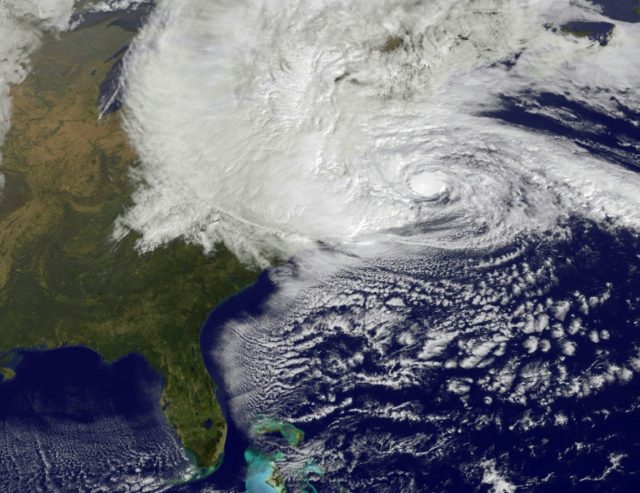Paris (AFP) – A study warned Wednesday of hurricanes hitting the US northeast coast more frequently in future due to climate change caused by fossil fuel emissions.
As the planet has warmed over the last few hundred years, Atlantic hurricanes have moved gradually northward from the western Caribbean to northern North America, said a study in the journal Scientific Reports.
This trend would continue if humanity keeps pumping planet-warming greenhouse gases into the atmosphere.
“Our results strongly suggest that future emission scenarios will result in more frequent tropical cyclone impacts on the financial and population centres of the northeastern United States,” wrote the team.
They had reconstructed hurricane rainfall for the western Caribbean as far back as 450 years ago, by analysing the chemical composition of stalagmite from a cave in Belize.
Hurricane rainfall has an easily-recognisable, unique chemistry preserved in the stalagmite as it grows out of deposits left behind from dripping water.
The data showed the average number of hurricanes at the Belize site decreased at the same time as hurricane records showed they had become more frequent in places like Bermuda and Florida.
“This information showed that Atlantic hurricanes were moving to the north,” said a statement from Durham University, whose researchers contributed to the study.
The north-shifting hurricanes were of a particular type — long-lived storms which develop near the Cape Verde islands off Africa’s west coast. They are influenced by the width and position of the so-called Hadley cell — a pattern of circulating air in the area.
As carbon dioxide (CO2) levels in the atmosphere have increased since the Industrial Revolution, the Hadley cell has expanded, the team wrote.
“This suggests that from the late 19th century, manmade emissions have become the main driver behind shifting hurricane tracks by altering the position of global weather systems,” said the statement.
– Redirected –
“If future trends in carbon dioxide and industrial aerosol emissions continue as expected, hurricanes could shift even further northward, exacerbating the risk to the northeast coast of the USA.”
In 2012, Hurricane Sandy unleased three-metre (10-foot) floods across coastal New York and New Jersey, after lashing the Caribbean.
Having caused an estimated $71 billion in damage and 157 deaths in the US, Sandy is considered the second costliest hurricane in American history, after Katrina which ravaged the Gulf Coast in 2005.
The study said the northward movement of the so-called Cape Verde hurricanes did not mean fewer storms for the west Caribbean coast.
A second category of hurricane, a shorter-lived type which forms within the Caribbean basin itself and makes land quite quickly, is likely to become worse as well.
“These storms are likely to increase in number as Caribbean sea surface temperatures continue to warm,” and may increase in strength, study lead author Lisa Baldini of Durham University told AFP.
“These storms generated within the Caribbean are largely replacing the Cape Verde storms that are being redirected northward,” she said.
In December last year, the world’s nations adopted the Paris Agreement to limit average global warming to two degrees Celsius (3.6 degrees Fahrenheit) over pre-industrial levels.
This would be achieved by cutting emissions from burning coal, oil and gas, switching to renewable sources like solar energy instead.

COMMENTS
Please let us know if you're having issues with commenting.